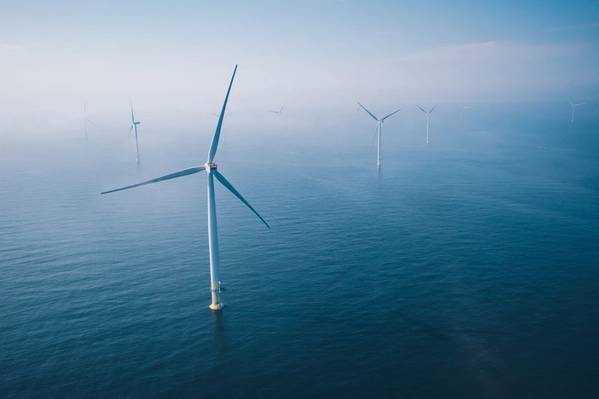
On March 29, 2021, President Biden announced his ambitious plan to deploy 30 gigawatts (GW) of offshore wind power – enough energy to power 10 million U.S. homes – by 2030. The plan would leverage authorities under the Department of Interior, Energy, and Commerce to guide “more than $12 billion per year in capital investment in projects on both U.S. coasts, create tens of thousands of good-paying, union jobs, with more than 44,000 workers employed in offshore wind by 2030 and nearly 33,000 additional jobs in communities supported by offshore wind activity.” The U.S. maritime industry, of course, enthusiastically responded to the Administration’s goal, anticipating the numerous opportunities to develop jobs throughout the construction and operation phases of this emerging industry. Vessel construction contracts were signed, terminal space was identified for development, environmental permit applications were filed, and new joint ventures were formed to bring together the unique expertise of Jones Act vessel operators with foreign experience from European offshore wind markets.
However, two-and-a-half years later, there are signs that the Administration’s 30 GW goal may be slipping out of reach. Increases in interest rates, supply chain costs, and local opposition have raised questions as to whether the federal government is doing enough to sustain the development of the offshore wind industry.
The Inflation Reduction Act of 2022, Pub. L. No. 117-169, (the IRA) signed into law on August 16, 2022, has been the focal point of federal government support for offshore wind development. Among other offshore wind provisions, the IRA’s energy investment tax credit (the ITC) provides a maximum 30% tax credit for any offshore wind project that begins construction prior to January 1, 2026. The ITC begins at a base credit of 6%, rising to 30% for offshore facilities that pay prevailing wages and meet certain apprenticeship requirements. In addition, projects that meet certain domestic content requirements also would be eligible for a bonus tax credit ranging from 2% up to 10%, depending on whether the project also meets wage and workforce requirements.
In May, the U.S. Treasury issued guidance on the domestic content requirement, to much consternation. The guidance provides that to obtain the bonus credit, the eligible project must meet both a “steel or iron requirement” and a “manufactured products requirement”. Under the first requirement, with limited exception, all manufacturing processes for a project’s structural steel and iron must occur in the United States. In turn, the manufactured products requirement has a sliding scale, which requires 20% of products used on a project to be manufactured in the U.S. starting in 2023, with such percentage increasing to 55% after 2027. The general view of offshore wind developers has been that these goals are unachievable given current U.S. manufacturing production levels.
To offset the costs of manufacturing these products domestically, the IRA also contained a manufacturer tax credit, including a credit for the construction of offshore wind construction and operation vessels, equal to 10% of the sales price. Other manufactured components (such as blades and towers) are eligible for a tax credit based upon the total rated capacity of the project for which they are used.
In addition to the these IRA tax credits, maritime operators looking to construct vessels for deployment in the offshore wind industry can also take advantage of attractive financing terms offered under the Maritime Administration’s (MARAD) Title XI Federal Ship Financing Program. Specifically, on June 23, 2022, MARAD designated vessels primarily used in the construction, service, or maintenance of offshore wind facilities as “Vessels of National Interest”, which gives such vessels priority in terms of application review and funding. Although it can be challenging to get through the application process, the Title XI program generally offers far more attractive interest rates and longer maturities (up to 25 years) than commercial lenders. MARAD currently has $35.4 million available in Title XI subsidy, which can support up to $475 million in loan guarantees, depending upon the specific elements of such guarantees. The industry has responded positively to this designation, resulting in the following offshore wi
nd vessel applications pending before MARAD:
To provide the requested guarantees, MARAD will require significant additional appropriations for the Title XI program. Historically, this has proven difficult as the program has not received funding from Congress since 2018 and no Presidential budget request has included MARAD funding for the last 23 years.
Despite the IRA tax credits and interest in using Title XI to support the construction of offshore wind vessels, the development of the U.S. offshore wind industry appears to be stalling. As was widely reported, in early September the CEO of Orsted – the world’s largest offshore wind developer – stated that walking away from the company’s U.S. projects was a “real option” due to the economic challenges of such projects. Developers such as Orsted are actively lobbying the Biden Administration to loosen Treasury’s rules governing the IRA’s domestic content requirement bonus tax credit, outlined above. State governments are feeling the squeeze as well, many of which have laid out millions of dollars in state funding to encourage offshore wind projects to get off the ground. A coalition of governors from New Jersey, New York, Connecticut, Maryland, Massachusetts and Rhode Island recently urged President Biden to take significant steps on tax credits, revenue sharing, and environmental permits to mitigate the risk that these fledgling projects will fail.
Whether the Biden Administration or Congress take further action to support the offshore wind industry remains to be seen. At the time of writing another government shutdown looms large, with increasing disagreement on spending levels across government programs. Accordingly, it seems unlikely that any further spending on the oft-controversial offshore wind industry will occur, particularly as we enter a Presidential election year. Thousands of U.S. mariner and shipbuilding jobs hang in the balance, waiting to see which way the political winds blow.